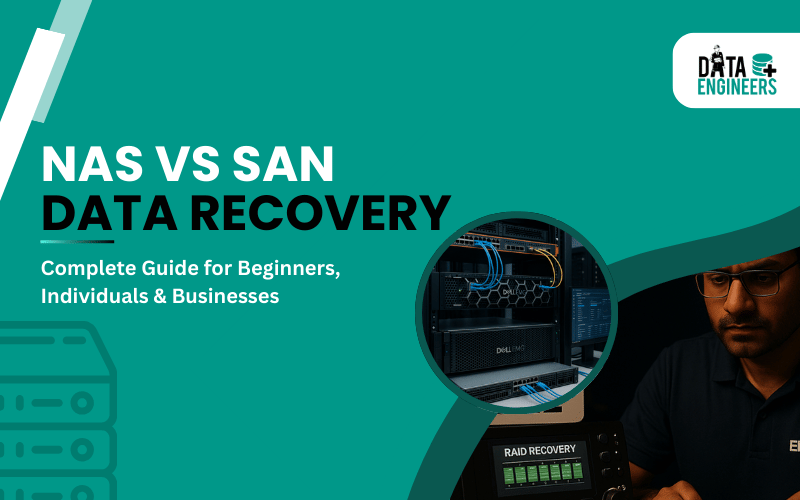
- 9 September, 2025
- Data Engineers
- 0 Comments
- Blog
NAS vs SAN Data Recovery: Complete Guide for Beginners, Individuals & Businesses (2025)
In 2025, data is the backbone of personal and professional life—from home offices and startups to large enterprises and public institutions.
Whether you’re:
📁 Backing up important documents and memories on a Synology or QNAP NAS, or
💼 Managing mission-critical applications on a Dell EMC or NetApp SAN, data loss is still a major risk.
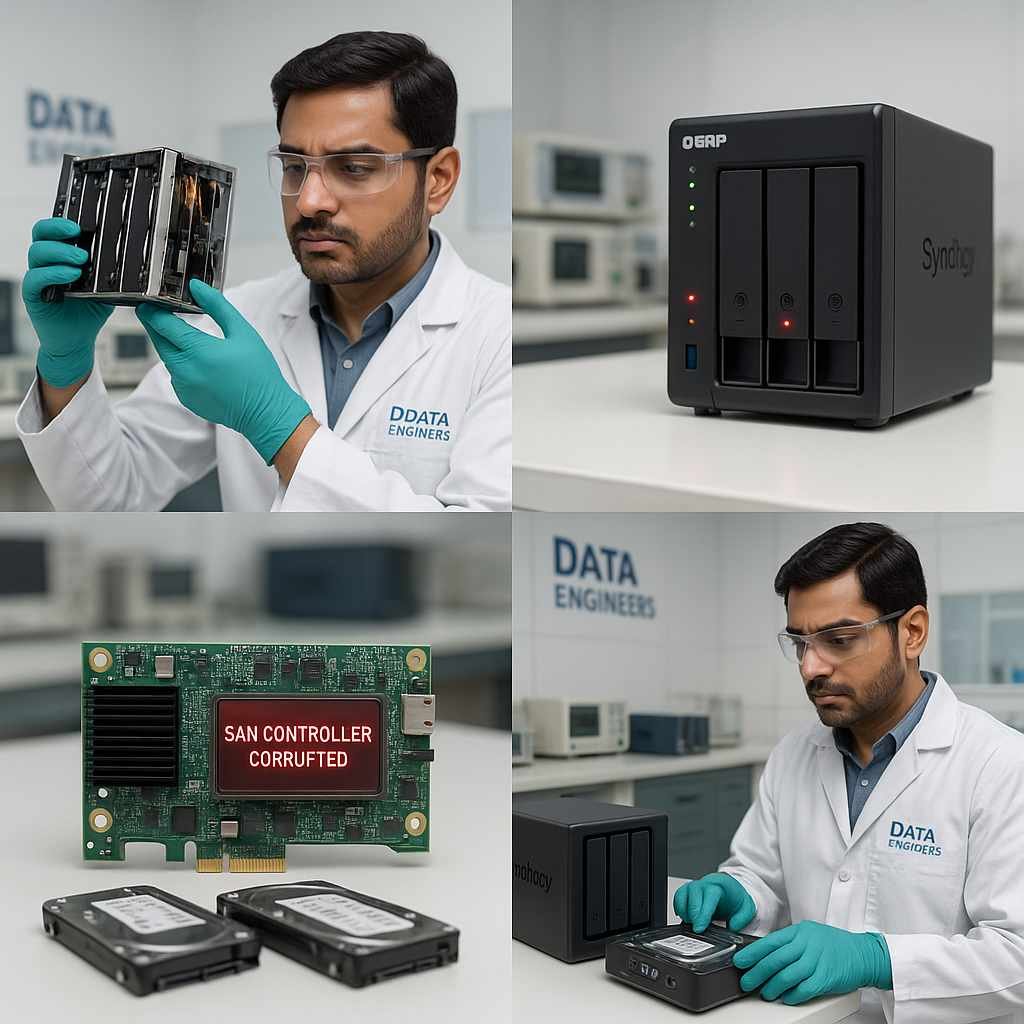
Even with smart RAID systems, redundancy, and failover mechanisms, issues like:
⚙️ Firmware corruption
💥 Drive failure
⚡ Power surges
🧍♂️ Human error
🛑 Ransomware attacks
can suddenly make your files or systems inaccessible.
This guide explains how to safely recover data from NAS and SAN storage systems, when to attempt DIY, and when to involve professionals.
🔍 What is NAS (Network Attached Storage)?
A NAS device is a network-connected smart storage unit designed for individual users, small teams, and growing businesses.
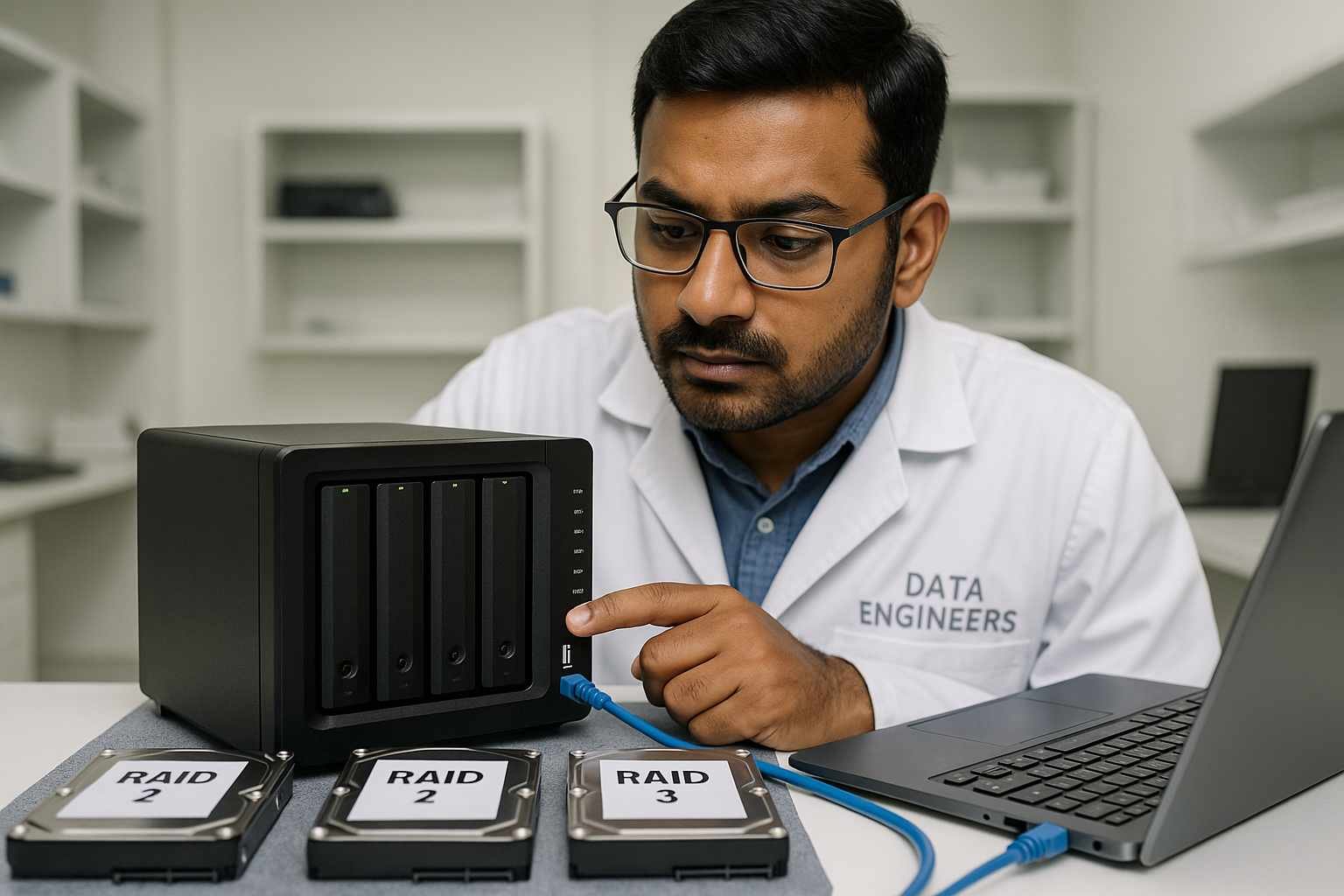
🛠️ Common Brands: Synology, QNAP, WD My Cloud, Asustor
🌐 Protocols: SMB (Windows), NFS (Linux), AFP (macOS)
🔧 Use Cases:
📦 Secure personal file storage and backups
🧑💼 Shared document storage for startups
🎬 Media servers and cloud drive alternatives
✅ Advantages:
💸 Affordable and scalable for homes and SMBs
🧰 Easy to configure and maintain
☁️ Cloud-like access without subscription costs
💼 What is SAN (Storage Area Network)?
A SAN is a high-performance enterprise storage network, ideal for organizations needing fast, reliable, and centralized data access.

🏢 Top Vendors: Dell EMC, IBM, NetApp, HP, Hitachi
🔗 Protocols: iSCSI, Fibre Channel, FCoE
💻 Use Cases:
📊 Hosting enterprise-grade databases (Oracle, SAP, SQL)
🖥️ Powering virtualized environments (VMware, Hyper-V)
🌩️ Storage backend for private/hybrid cloud infrastructure
✅ Advantages:
📦 Block-level access = maximum performance
♻️ Highly redundant and scalable
🏭 Essential for data centers and mission-critical operations
⚠️ Why Data Loss Happens in NAS & SAN (2025 Realities)
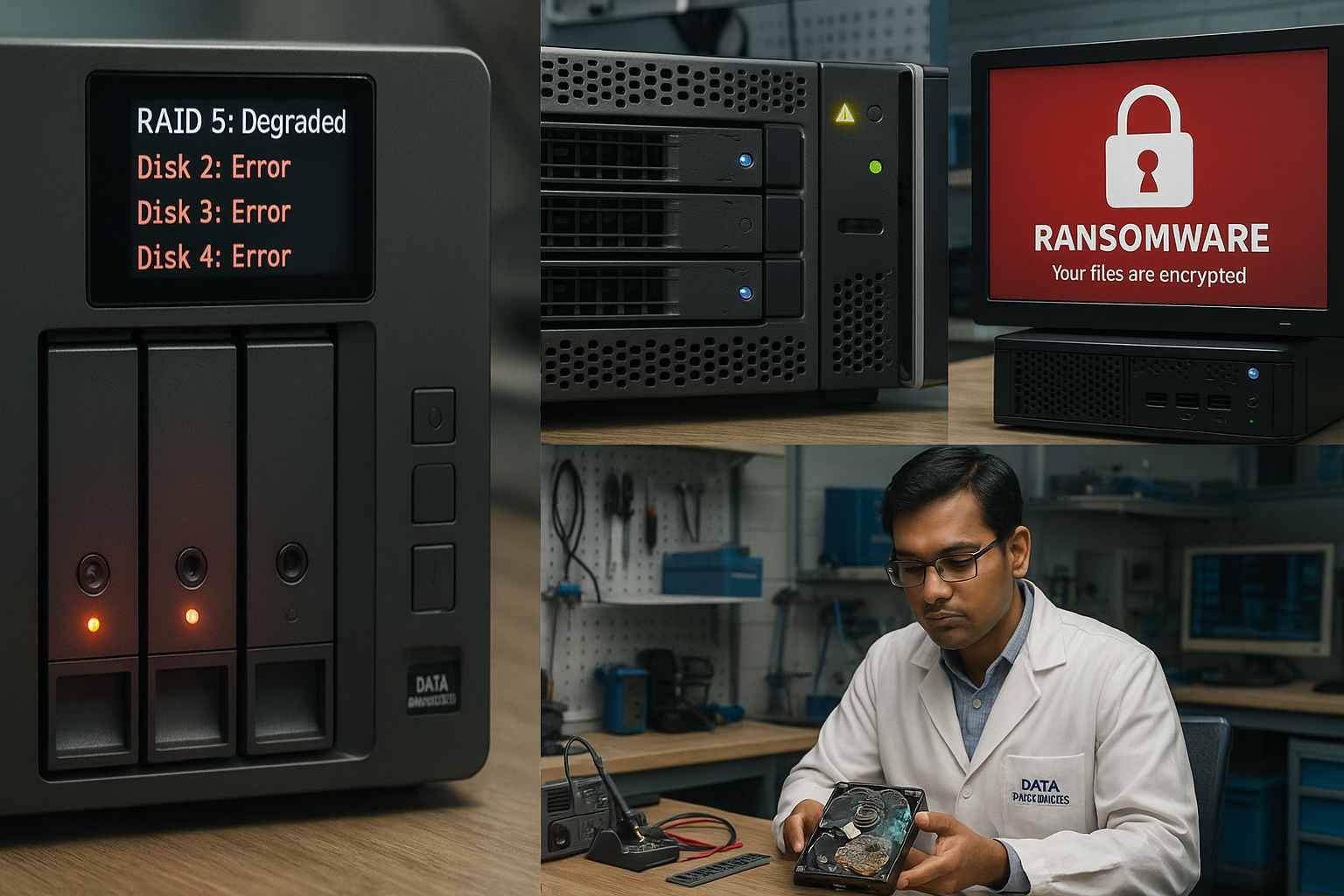
📉 Common NAS Failures
🗑️ Accidental deletion or formatting
🔄 Corrupted volumes after firmware updates
💽 Disk failure or RAID degradation
🔐 Ransomware locking shared folders
🔌 Misconfigured file permissions or network issues
💥 Common SAN Failures
💔 Multiple disk failure in complex RAID groups
🧠 Controller board or switch failure
📛 Corrupted LUNs (Logical Unit Numbers)
🚚 Issues during cloud migration or virtualization
👷 Human error during reconfiguration or expansion
🛠️ NAS Data Recovery: Step-by-Step (For Individuals & SMBs)
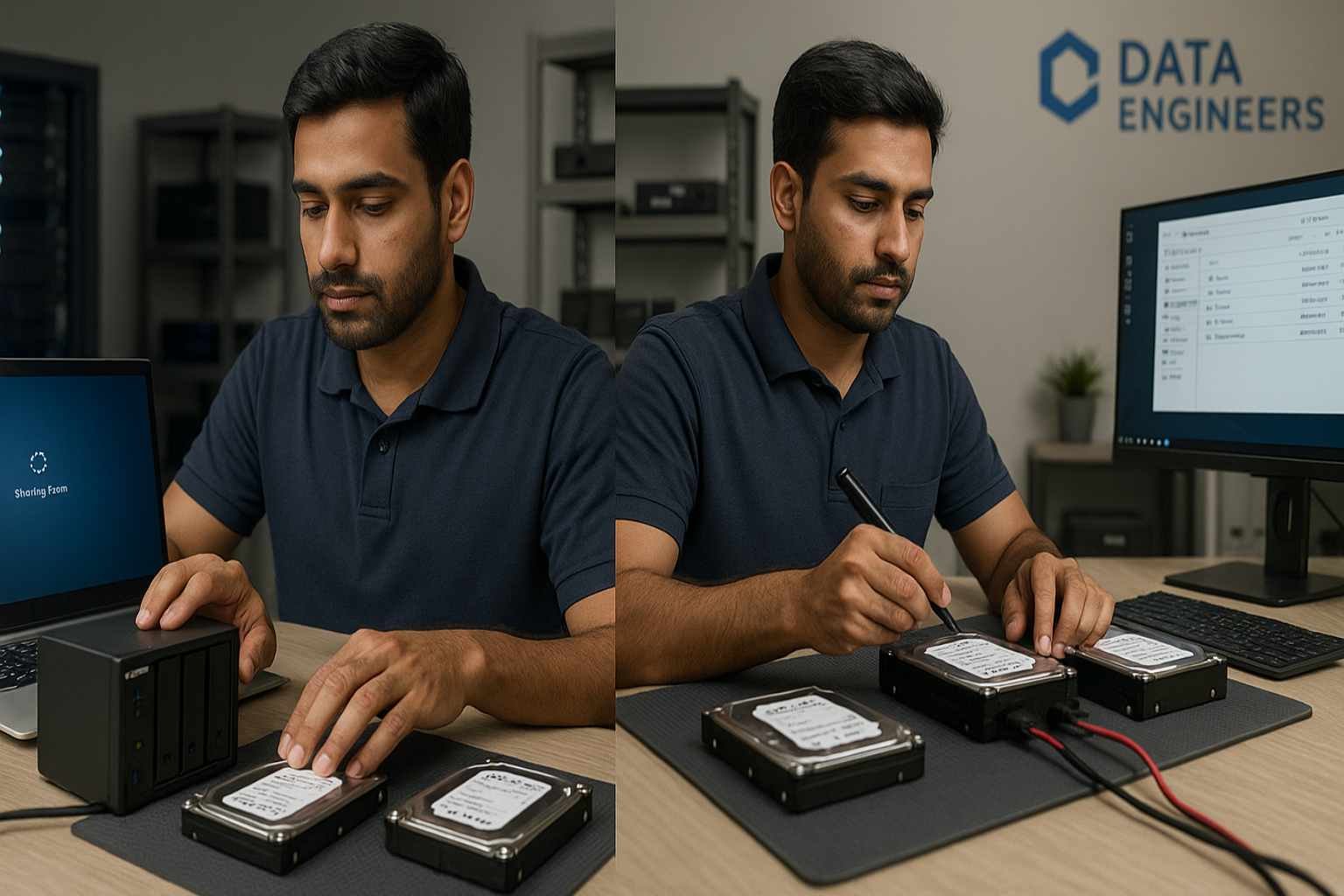
🔌 Step 1: Power Off Immediately
Prevent further damage or overwriting. Unmount or shut down safely.
📝 Step 2: Document & Label Everything
Note disk order and RAID configuration. If you’re unsure—stop here.
🗂️ Step 3: Check for Backups or Snapshots
Most NAS brands offer built-in backup tools:
📦 Synology: Hyper Backup, Snapshot Replication
🔄 QNAP: Hybrid Backup Sync, QuDedup
🗑️ Check the Recycle Bin feature
📀 Step 4: Clone the Drives Before Doing Anything
Use disk imaging tools to create bit-by-bit copies. Never work directly on original disks.
🧠 Step 5: Recovery (DIY or Professional)
🧩 Attempt recovery only if you fully understand RAID structure and filesystem (e.g., EXT4, Btrfs, ZFS).
🚫 If unsure, contact a professional.
⚠️ Incorrect rebuilds can permanently destroy data. Rebuilding a degraded NAS with the wrong disk order or RAID settings can be irreversible.
🔒 SAN Data Recovery: Why You Shouldn’t DIY
SAN recovery is complex, risky, and not suitable for beginners or even most IT teams without deep experience.
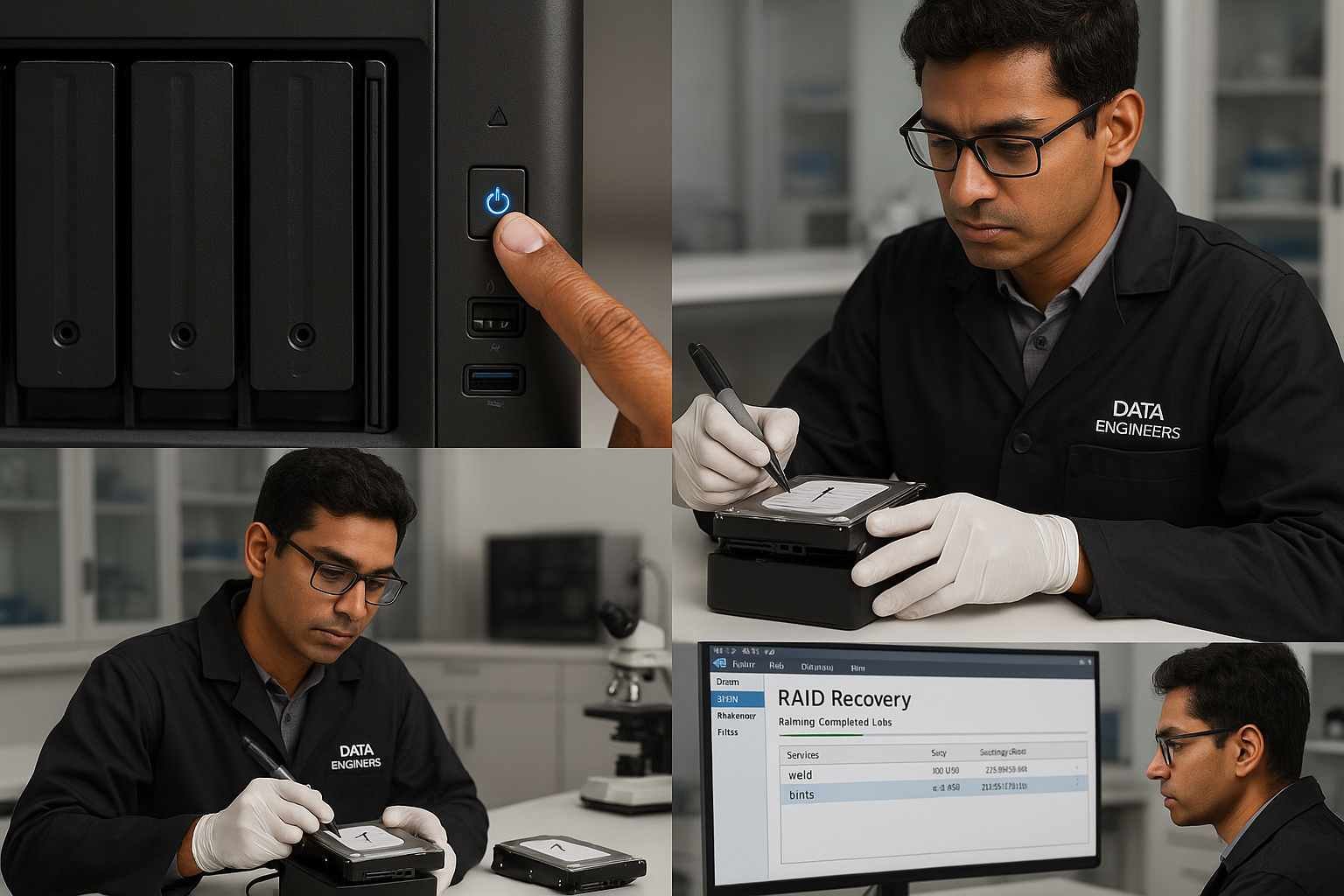
🚨 Common Recovery Challenges:
🔀 Nested RAID arrays (RAID 50, 60, 10)
🎛️ Controller-based virtual disk mapping
📉 Corrupted metadata on high-volume LUNs
💻 Integration with VMware, Hyper-V, or cloud VMs
🧩 Vendor-specific partitioning (e.g., NetApp ONTAP, Dell VNX)
✅ Best Practices:
🛑 Stop using the SAN immediately
🧪 Clone all drives in original order
📋 Document RAID, controller model, and volume mapping
🧑🔬 Involve a professional SAN recovery team before rebuilding anything
✅ When to Call a Professional (Not DIY)
Situation | DIY Safe? | Call a Pro? |
🗑️ Deleted files on NAS | ✅ | ❌ |
⚠️ NAS RAID degraded but readable | ⚠️ | ✅ |
⚙️ Firmware update broke NAS volume | ❌ | ✅ |
🧠 SAN controller failed | ❌ | ✅ |
📛 LUN missing or corrupted in SAN | ❌ | ✅ |
🔐 Data used by business or regulated data | ❌ | ✅ |
🚫 Don’t “Experiment” on Commercial NAS or SAN Systems
If you’re handling business data, databases, virtual machines, or shared volumes:

📌 Stop: Do NOT attempt to reset, reinitialize, or rebuild without expert input.
❌ One wrong RAID configuration, firmware update, or volume rebuild can lead to complete and irreversible data loss.
⚠️ Many clients lose data after trying to fix it themselves using YouTube tutorials or open-source tools meant for consumer devices.
📍 Contact Data Engineers for Expert NAS & SAN Recovery
If you’re facing NAS or SAN failure, Data Engineers provides professional, lab-grade recovery services tailored for:
🏠 Home & Small Business NAS systems (Synology, QNAP, Asustor)
🏢 Enterprise SAN infrastructure (Dell EMC, NetApp, HP, IBM)
🧩 Corrupted, deleted, or inaccessible network storage volumes
📍 Our Location:
📌 704, Meghdoot Building-94,
🗺️ Nehru Place, New Delhi, India
📞 Phone Numbers:
📱 +91-9910132719
📱 +91-9818567981
☎️ +91-1126426316
📧 Email:
📨support@dataengineers.in
🌐 Website:
🔗 www.dataengineers.in
📌 Don’t risk your data—speak with professionals who specialize in NAS & SAN recovery.
🔐 Final Thoughts: NAS vs SAN Data Recovery in 2025
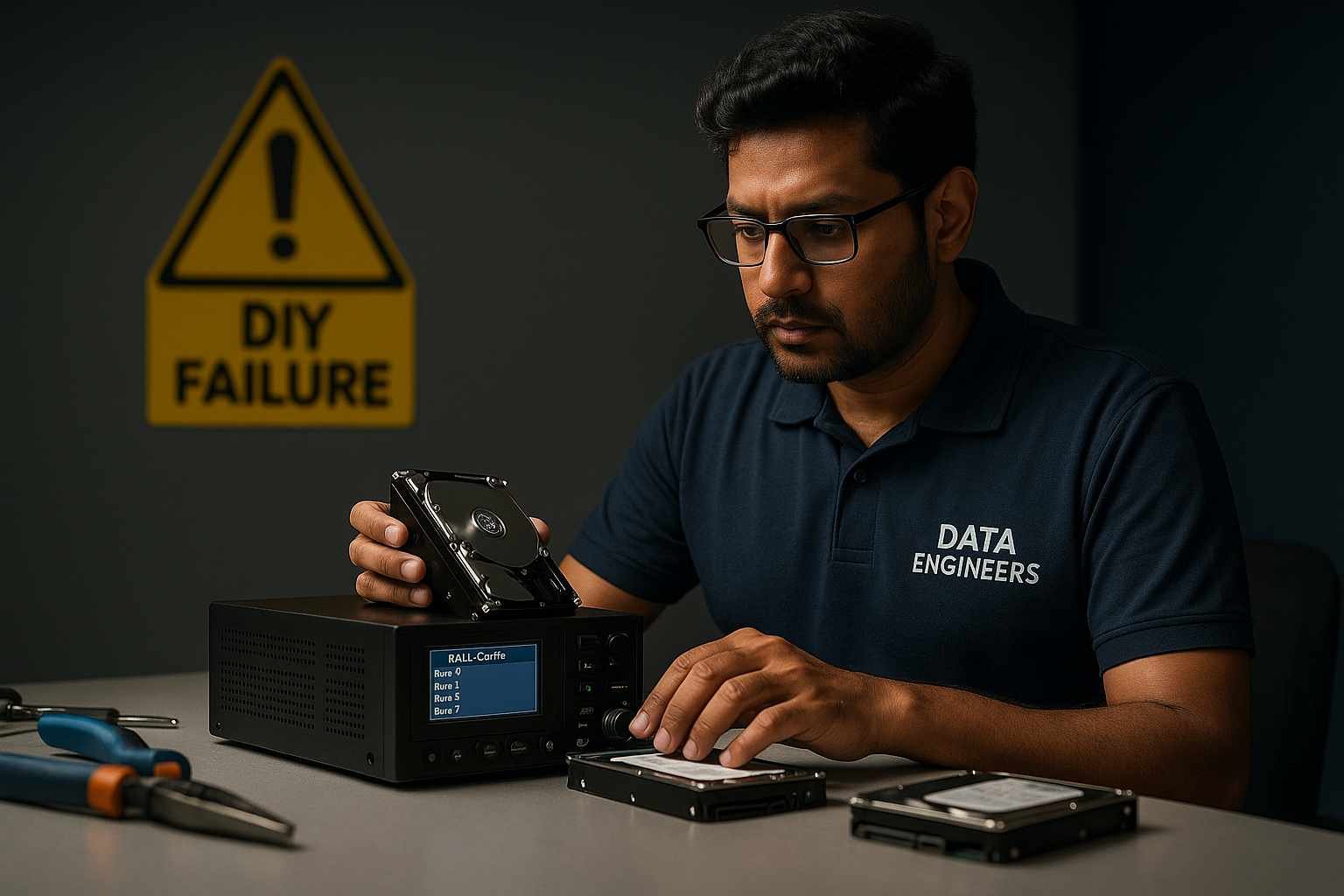
📦 NAS recovery may be doable in simple cases, but only with the right tools and knowledge.
🚫 SAN recovery should never be attempted by general IT teams or DIY users.
🔁 Backups are important, but having a recovery partner is critical when things go wrong.
🎯 If your data matters—don’t experiment. Trust certified experts.
👉 Ready for help? Contact Data Engineers Now

Worldwide Leader in Data Recovery

Professional Expertise with Long Term Experience
DATA ENGINEERS
011-26426316 | +91-9910132719 | +91-9818567981
support@dataengineers.in
Call us for a free advice.
Specialists at retrieving data from all types of hard drive and phone storage media, today Data Engineers has grown into the India’s largest and most technically capable data recovery company.

Leave a Comment